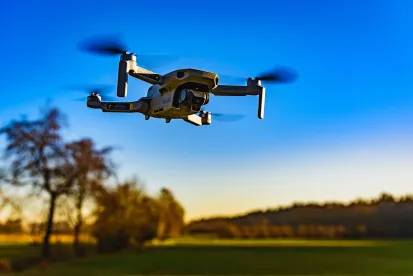As more and more unmanned aerial systems (UAS or drones) hit the skies, the Federal Aviation Administration (FAA) issued the UAS Remote Identification (RID) Rule to increase airspace safety and security. The time has come for the Rule to go into effect. As of September, the FAA’s remote ID requirements take effect. This means that UAS must comply with the Rule by facilitating their identification and tracking. While this Rule was opposed by some due to the privacy concerns, the good news for the UAS aviation industry is that it can now take advantage of the RID data that will follow. The industry can monitor pilot operating habits, use the data to investigate UAS incidents and even use the data to offer tailored, personalized services using drones.
The FAA’s Rule mandates that all UAS operating in the U.S. (with some exceptions) comply by one of these three ways:
-
Standard Remote Identification, or
-
Broadcast Modules, or
-
Use of FAA-recognized identification areas (FRIA)
Standard RID and Broadcast Modules transmit UAS-location and the location of the operator (when its Standard RID) or the takeoff location (for Broadcast Modules). FRIA compliance is location-based and allows for exemption of the need to equip with the technology if flying in an FAA pre-approved location. (Note that the first two options must have an accepted Declaration of Conformity (DoC) from the FAA to be used legally).
The insurance industry is looking to Standard Remote Identification and the use of Broadcast Modules to protect valuable data for coverage purposes. Right now, there are several insurance apps on the market that provide UAS pilots with on-demand insurance for their drone operations. Now, since the RID technology is compatible with existing mobile device sensors (so that this RID system can actually function and be seamlessly integrated), these apps can provide detailed data to insurance companies about the operator similar to telematics in cars.
Telematics in cars are used by the automobile insurance industry to monitor driving behavior and provide personalized insurance rates and options. Now, insurance companies can use UAS RID to assess the risk profile for UAS pilots in the same way they use telematics for car insurance. Data such as whether the drones have been flown in restricted airspace, exceeded altitude limits, flying beyond insurance coverage boundaries, or other types of frequent non-compliance can be used to adjust policy premiums based on risk. Further, RID data can help insurance companies with incident investigations. If there is an accident when operating a drone, the data can provide pertinent details such as UAS location, altitude, and speed. This data is a way for the insurer to determine liability, effectuate the claims process and identify potential fraud.
With the RID Rule effective date pending, the data use cases will likely increase and the data will become more valuable for the industry. While data collection, use, and disclosure must be carefully thought out, this RID data will surely assist the aviation industry work towards a better infrastructure for (even) more drones to take flight.



 />i
/>i

